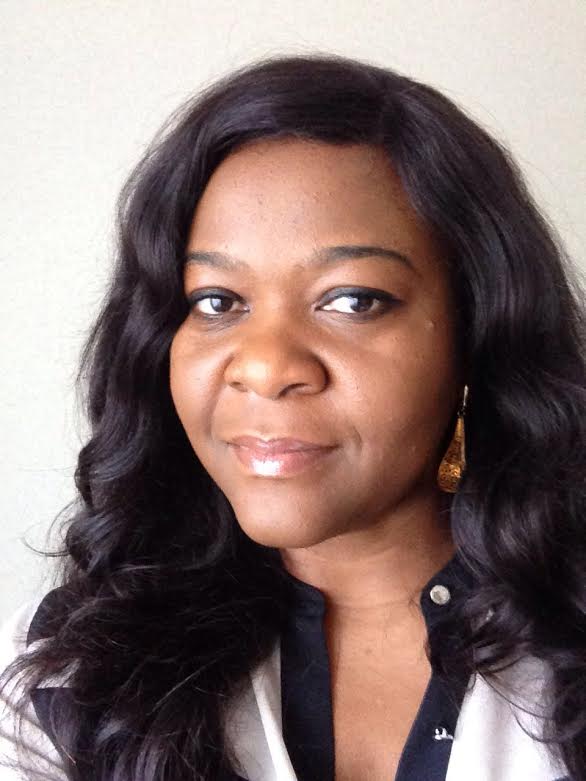Our vaccination coverage rates are still low—Dr Wonodi

Dr Chizoba Wonodi is Nigeria Country Director, Johns Hopkins International Vaccine Access Center (IVAC) and convener, Women Advocates for Vaccine Access (WAVA). In this interview with LARA ADEJORO, she bares her mind on vaccines advocacy, funding and the gains.
Can you explain the dynamic changes Nigeria has gone through on vaccines over the years?
The Nigerian immunization landscape has experienced many game-changing shifts over the years. Three important ones come to mind – polio eradication, new vaccines introduction and Gavi transition. First the adoption of the historic WHO General Assembly resolution in 1988 to eradicate polio by the year 2000, set in motion nearly three decades of intense effort to wipe out polio from the world. In Nigeria, governments and partners have poured in millions of dollars into the immunization space to conduct house-to-house polio vaccination campaigns and this eradication drive has brought immense health, economic, technical and social benefits to Nigeria. At the same time, it has caused some fundamental shifts in the way immunization services are perceived and delivered. In many parts of the country, polio is the only vaccine people know about, many parents expect that vaccinators will come to them at home rather than they go to the health facilities to get their children vaccinated. On the service delivery end, executing multiple campaigns has created what I call a polio eradication economy – which is not a bad thing per se. With every campaign, Nigeria and partners spend millions of dollars; these funds pay for vaccinators, supervisors, transportation, logistics, etc. Invariably, these millions get into the local economy and boost it. I feel the effect of the polio economy is more palpable in the north where we have historically had as much as 10 campaigns a year. The downside if all this is the monetization of service delivery. The second dynamic change is the rapid expansion of vaccines schedule. Since 2011, Nigeria has introduced four new vaccines into the immunization schedule. We now have MenAfrivac used in campaigns against the deadly meningitis, we also have the five-in-one pentavalent vaccine, the PCV (against pneumonia) and the IPV (against polio) all being used in the routine system. Beyond these four, there are plans to introduce two more – rota virus vaccine (against diarrhea) and HPV vaccine (against cervical cancer). Clearly, these new vaccines bring live saving benefits as they prevent killer diseases. But they cost more than the traditional vaccines and therefore require more investments by the government. The third dynamic change relates to the funding of vaccines and the rapid decline of donor support for vaccine programmes in Nigeria. Currently, a large portion of our new vaccine costs are borne by external donors, in particular, the Geneva-based vaccine alliance called Gavi. Nigeria has now entered the accelerated transition from Gavi support. In 2017, Gavi will pay for 63% of the 322 million dollars needed to buy vaccines for Nigeria. By 2021, their subsidy will drop to 21% of the 353 million dollars needed and by 2022, Gavi will no longer co pay for vaccines – Nigeria will be expected to fully finance the 345 million dollars needed for vaccine procurement. These are important funding shifts that we need to be begin planning for.
How has WAVA’s work impacted on the awareness of vaccines in the country?
WAVA is Women Advocates for Vaccine Access, an NGO coalition raising a strong Civil Society voice on immunization in every state. So far we have 34 member organizations and 8 champions spread across the six geopolitical zones. WAVA is helping to make immunization advocacy a developmental issue, not just a matter for health practitioners, but a concern for teachers, farmers, market women, tailors, etc. Some of the 34 members of WAVA are primarily focused on non-core health issues like education, female empowerment, agriculture; but since joining WAVA, they have now adopted immunization access and financing as their cause as well.
What will WAVA be doing this year to complement its efforts on vaccines thus far?
We plan to expand aggressively. By December 2017, we want to have WAVA members in every state of the federation. We want our impact felt strongly, so we are enabling our members to carry out advocacy through the small grants programme we launched in December 2016. Through a competitive process, we will provide funding, at least N2 million each, to a total of seven organizations to undertake advocacy for vaccine access and financing. For advocacy to succeed, you needed to continually hammer the messages to different people and in different ways. WAVA is raising the voice on immunization.
On the health budget proposal, do you think the outcome will be favourable for vaccines funding and availability?
The 2017 budget provides N12 billion for vaccines, including polio. We have been assured that this is sufficient financing for vaccines this year, save for a 5 million dollars funding gap which observers believe can be bridged. When you consider the rollover vaccine stock from last year and unspent money from a previous World Bank loan, federal government budgeted only 21% of what is needed. The main problem begins next year when all the leftovers and rollovers would have been spent. Next year, the budget may need to carry more of the vaccine load. We need 141 million dollars to meet the government share of the vaccine bill.
Few years from now, international donors will withdraw its support to Nigeria on vaccines funding.
What should we be doing now as individuals and what should the government be doing?
The government needs to come up with a multi-year sustainable immunization financing transition plan, what we at WAVA call the SIF Transition Plan. The plan should specify how the country will finance the vaccine programme. Going by current estimates, we need 141 million in 2018, rising to 345 million in 2022. We believe that government cannot do it alone, but they have the lion share of the burden. Both federal and state governments should join forces in paying for vaccines. The overall health budget should increase to create space for the needed expansion in the vaccine line item. Federal and state budgets for health should aim to reach the 15% as per the 2001 Abuja declaration. Currently, the federal allocates only 4.17% of its budget to health, 16 years after the declaration, that’s not good enough. If we increase the health’s share of the budget to 6% in 2017 and by 1% every year subsequently, we will achieve the Abuja declaration in 2026. That is a modest ambition. We can do it. Another solution is to use the new taxes on luxury good items as a source of new funding for vaccines. It will be champagne for campaign.
Nigeria hasn’t ran out of stock of vaccine for some time now, yet, a large number of children still die from vaccine preventable diseases. Where are we missing it?
First, a large percentage of our children do not get vaccinated completely as they should. Studies show our vaccination coverage rates are still low. The most recent National Demographic Health Survey (NDHS) done in 2013 reported that only one in five (about 21%) of children received the full complement of vaccines. This means that though vaccines may be in stock, certain health system, behavioral or cultural challenges still prevent vaccination services from reaching or being accepted by all eligible children. Second, vaccine-preventable diseases such as pneumonia and diarrhea have multiple causal organisms, some of which are not covered by available vaccines. This is important to understand. Pneumonia and diarrhea are caused by different bacteria and virus. The top three causes of pneumonia are the bacteria – pneumococcus and Hib, and the virus- RSV. While there are vaccines against pneumococcus (PCV) and Hib (pentavalent) there is none yet for RSV. So a child may be vaccinated with PCV and penta and be protected against pneumonia caused by pneumococcus and Hib, but still be susceptible to pneumonia cause by organisms for which there are no vaccines such as RSV. Having said that, studies have shown that the benefits of vaccination extends beyond the specific disease covered by the given vaccine and beyond the individuals vaccinated. So back to your question of what are we missing? We are still missing a lot of children. One in five fully vaccinated child is not good enough. If we can reach all children with available vaccines, we will go a long way to reducing child mortality. Vaccines have contributed significantly to the progress we have already made on child mortality over the last 25 years. Between 1990 and 2015, under-five mortality rate was cut in half from 213 to 109 deaths per 1,000 live births. A major driver for this reduction is the progress with preventing measles deaths, which declined by as much as 97% in this time period. Today we don’t see or hear about measles like we used to 25 years ago. Although there are still the occasional outbreaks, they are not as large or as widespread as they used to be before and they occur in parts of the country where vaccine coverage is still very low. So it is not enough to buy vaccines and have them in stock, the vaccines much reach the children that need them. Government, particularly state governments, must invest in the operational costs to deliver vaccines to the end users.
How much would Nigeria be needing to fund vaccines annually after discontinuation of Gavi support?
Current estimates suggest we will need $345 million in 2022 when the country is fully self-financing. This continues to rise to 378 million dollars in 2025.
If the country invests in vaccines now, of what gain would that be for the country?
Vaccines have been shown to have not only health, but economic and social benefits. Vaccines save lives and create wealth. Every dollar invested in vaccine programmes can yield between 16 to 44 dollars in economic returns for the country. Tell me what other intervention or business can give this level of return on investment. Paying for vaccines should be a no-brainer – as my kids would say.







